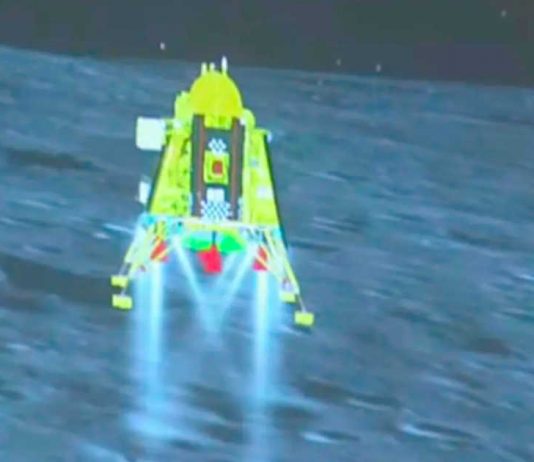With the echoes of Russia’s Luna-25 mission failure still resonating, India’s Chandrayaan-3 has emerged as a beacon of success. The Indian Space Research Organisation (ISRO) has confirmed the successful landing of the lunar module on the Moon’s South Pole. This achievement is not just a victory for India but a historic milestone in space exploration, marking the first successful execution of such a maneuver in this rugged region of Earth’s natural satellite.
Launched on July 14th, Chandrayaan-3 has been orbiting the Moon since early August. The ISRO has been meticulously preparing the spacecraft for descent and landing, capturing the first images of the Moon with an onboard camera specially designed to navigate the delicate maneuver.
The lunar South Pole has become a coveted destination, with NASA’s confirmation of ice water presence turning it into a potential game-changer for interplanetary travel. The hydrogen and oxygen that compose water molecules are key ingredients for rocket fuel, opening the possibility of the Moon as an off-Earth refueling station.
Chandrayaan-3: A Mission of Discovery
With a planned duration of 14 Earth days (one lunar day), Chandrayaan-3’s mission is packed with scientific experiments. Weighing 3,900 kilograms and equipped with various tools and sensors, the probe aims to gather data on the Moon’s mineral composition and water presence.
This mission is India’s third lunar endeavor. The first, an orbiter, analyzed the surface between 2007 and 2008, while the second ended in a crash due to technical problems during the landing.
India’s success places it in an exclusive club of nations that have landed modules on the Moon, alongside China, Russia, and the United States. All of these countries have ongoing missions focused on exploring the lunar South Pole.
China’s plans include a permanent scientific base, with the Chang’e 7 module set for 2026. The United States has marked its calendar for the Artemis III mission in 2025, aiming to send astronauts to the region. Russia, after the failure of Luna-25, faces decisions on whether to retry or abandon its plans.
India’s Chandrayaan-3 mission is more than a national achievement; it’s a symbol of human innovation and a step towards a new era of lunar exploration. The successful landing on the South Pole not only opens doors for scientific discovery but also paves the way for future space missions. The reduced lunar gravity and potential for refueling could revolutionize how we explore the cosmos.
